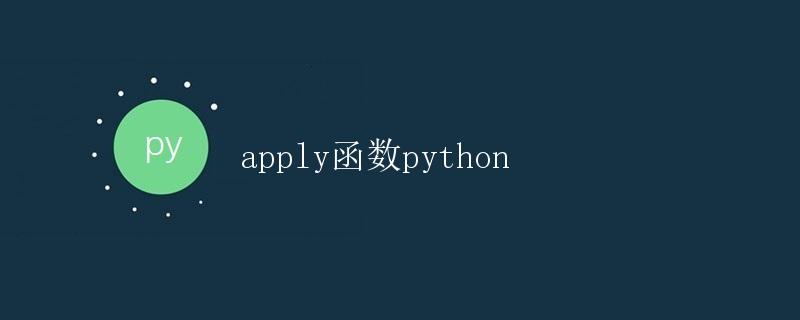Use of apply function in Python
Using the apply function in Python

In Python, the apply function is a very useful function that can apply a function to every element in a data sequence. In this article, we will introduce the use of the apply function in detail and provide example code.
Basic Syntax of the apply Function
The basic syntax of the apply function is as follows:
apply(func, *args, **kwargs)
Where func is the function to be applied, *args are the arguments to be passed to the func function, and **kwargs are the key-value pairs passed to the func function.
Example Code for the apply Function
Below, we will use several example code to demonstrate the use of the apply function.
Example 1: Square each element in a list
def square(x):
return x ** 2
data = [1, 2, 3, 4, 5]
result = map(square, data)
print(list(result))
Running result:
[1, 4, 9, 16, 25]
Example 2: Find the square root of each value in a dictionary
import math
data = {'a': 1, 'b': 4, 'c': 9, 'd': 16, 'e': 25}
result = map(math.sqrt, data.values())
print(list(result))
Running result:
[1.0, 2.0, 3.0, 4.0, 5.0]
Notes on the apply function
When using the apply function, please note the following:
- The first argument of the apply function must be a function.
- Parameters can be passed to the function using *args and **kwargs.
- The apply function returns an iterator object, which needs to be converted to a list using the list() function.
Summary
Through this article, we learned how to use the apply function in Python and provided example code. In actual development, the apply function can help us simplify code and improve efficiency.